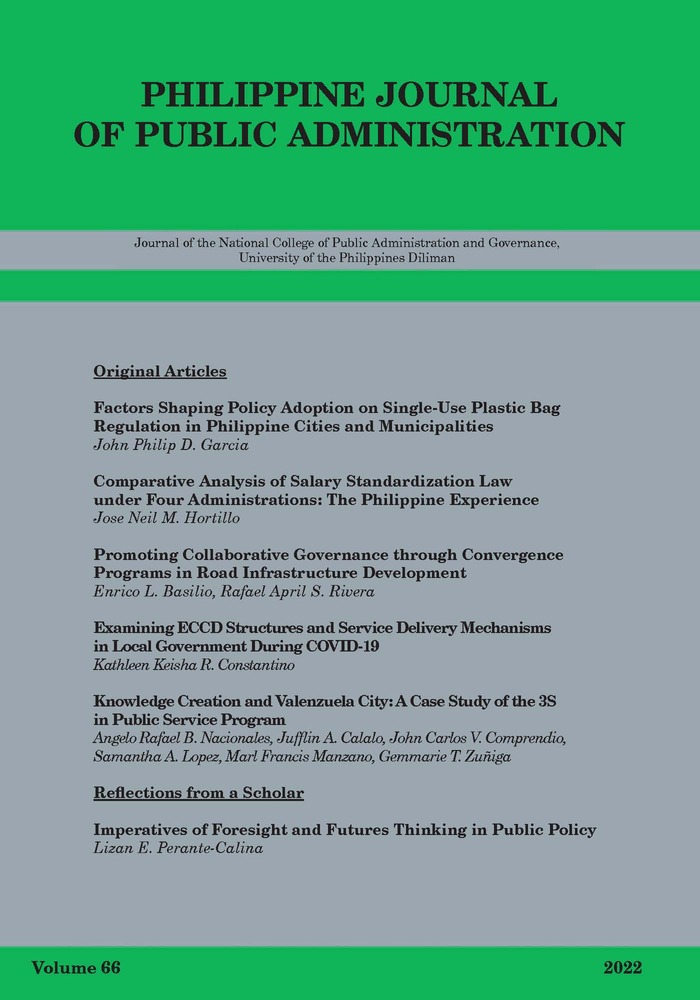Comparative Analysis of Salary Standardization Law under Four Administrations: The Philippine Experience
Abstract
The study examines the adjustments in the salary of civilian public servants in the Philippines under the Salary Standardization Law
(SSL) since it was first implemented in 1989. In showing the comparison of the increases made under four different administrations, the study
made use of the compounded annual growth rate (CAGR) analysis. Results revealed that in certain SSLs, lower-ranked public servants
received higher percentage of salary increase compared to their higher-ranked counterparts. Salary scales sometimes tended to grant higher
increases for higher grades and, at times, for lower grades. There were periods wherein public servants enjoyed their salary increases more
because of lower inflation rate. Past SSLs have made the salaries among the staff and supervisory-level public servants comparable to their private
sector counterparts. Earlier SSL implementations have widened the wage gap between the lowest- and top-ranked public servants. However, the
most recent SSL has made adjustments to address this issue. Future adjustments in the salary of public servants in the country should
continue to take into consideration projected inflation rates and wage gap issues. This study showed that CAGR analysis is an effective tool that
could guide analysts and decision-makers to draft policies that are based on empirical and historical data.



